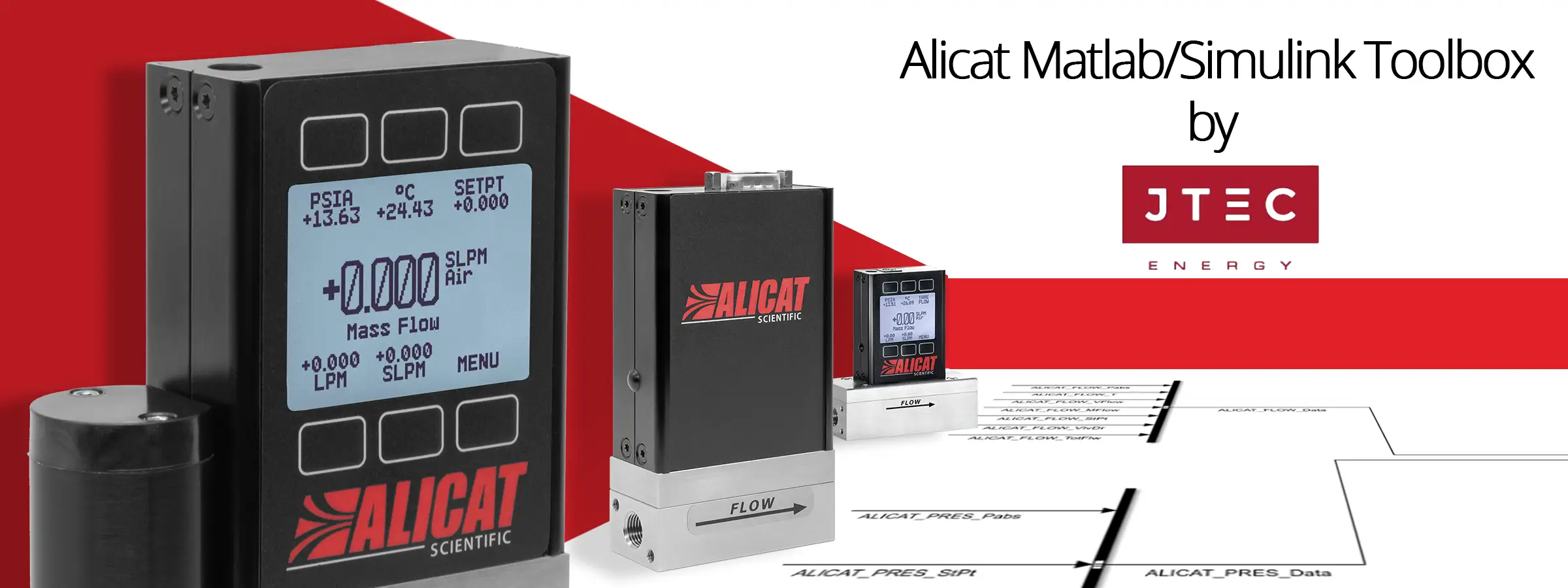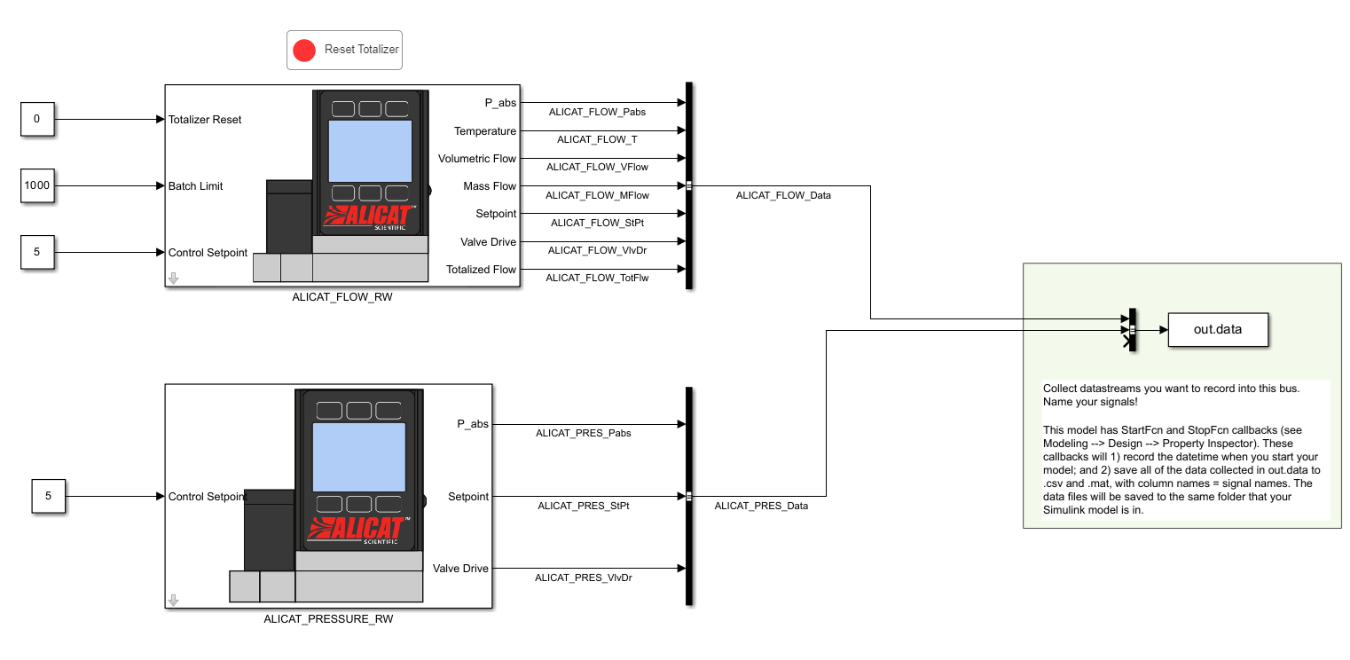Alicat MATLAB/Simulink Toolbox by JTEC Energy
Article by Gavin Williamson, Mechanical Engineer at JTEC Energy

Disclaimer:
The Alicat MATLAB/Simulink Toolbox (slx_ALICAT) was developed independently by JTEC Energy and is not an official product of Alicat Scientific. Neither JTEC Energy nor Alicat Scientific provide support for this software and are not responsible for its functionality, accuracy, or any outcomes resulting from its use. All risk associated with the use of this toolbox—including data integrity, hardware control, and system performance rests solely with the user. Users should verify all critical operations independently and consult Alicat Scientific directly for support related to their hardware.
Overview:
The engineering team at JTEC Energy has developed slx_ALICAT, a MATLAB/Simulink toolbox to allow easy integration of Alicat® Scientific’s control and sensing capabilities into Simulink. This toolbox takes advantage of Simulink’s drag‑and‑drop graphical programming environment to enable rapid configuration of simulated devices (models) especially for non‑programmers.
slx_ALICAT automatically takes care of a significant amount of housekeeping associated with setting up an Alicat—connecting to the device, enabling the totalizer, choosing the control loop variable, etc. This allows engineers to focus on data collection even quicker. It also has very low supporting hardware and software requirements—it runs in a normal Simulink model (not real‑time) and does not require any expensive specialized toolkits or computer platforms to work.
The core concept of the toolbox is that you start by adding a block to your model that represents your Alicat device—whether it’s a flow meter, pressure meter, or a controller. The configuration of the Alicat can then be specified by double‑clicking the block and selecting the appropriate mask parameters.
The inputs of the block can then be used to control the setpoint, set the batch size, and reset the totalizer. Simulink can be set up to run at a certain pace, which allows you to control the rate of your data acquisition. Details on how to set this up, along with an example model, can be found in the library’s help documentation.
Working Principle:

Features:
- Read Alicat mass flow meters, pressure meters, and CODA devices and BASIS devices
- Control Alicat mass flow controller, pressure controllers, and CODA devices and BASIS devices
- Configure Alicat devices (specific parameters will only appear when applicable to selected device)
- Communication port
- Gas type
- Data logging options
- Enable totalizer
- Enable valve drive recording
- Enable Alicat Controller
- This allows a controller to just be read as a meter through Simulink (It can still be controlled through the screen interface)
- Setpoint variable
- Enable batching
- An example model showing how to use the slx_ALICAT toolbox to collect data
- Model includes automatic dataset generation scripts that will save the collected data to a .csv and .mat file automatically when a simulation is stopped.
- Connect to several Alicat devices from one model
Limitations and Restrictions:
Currently, the toolbox supports only Alicat-compatible serial commands using ASCII over RS-232 or RS-485 communication protocols. To connect to an Alicat device from your computer, you must specify the appropriate COM port.